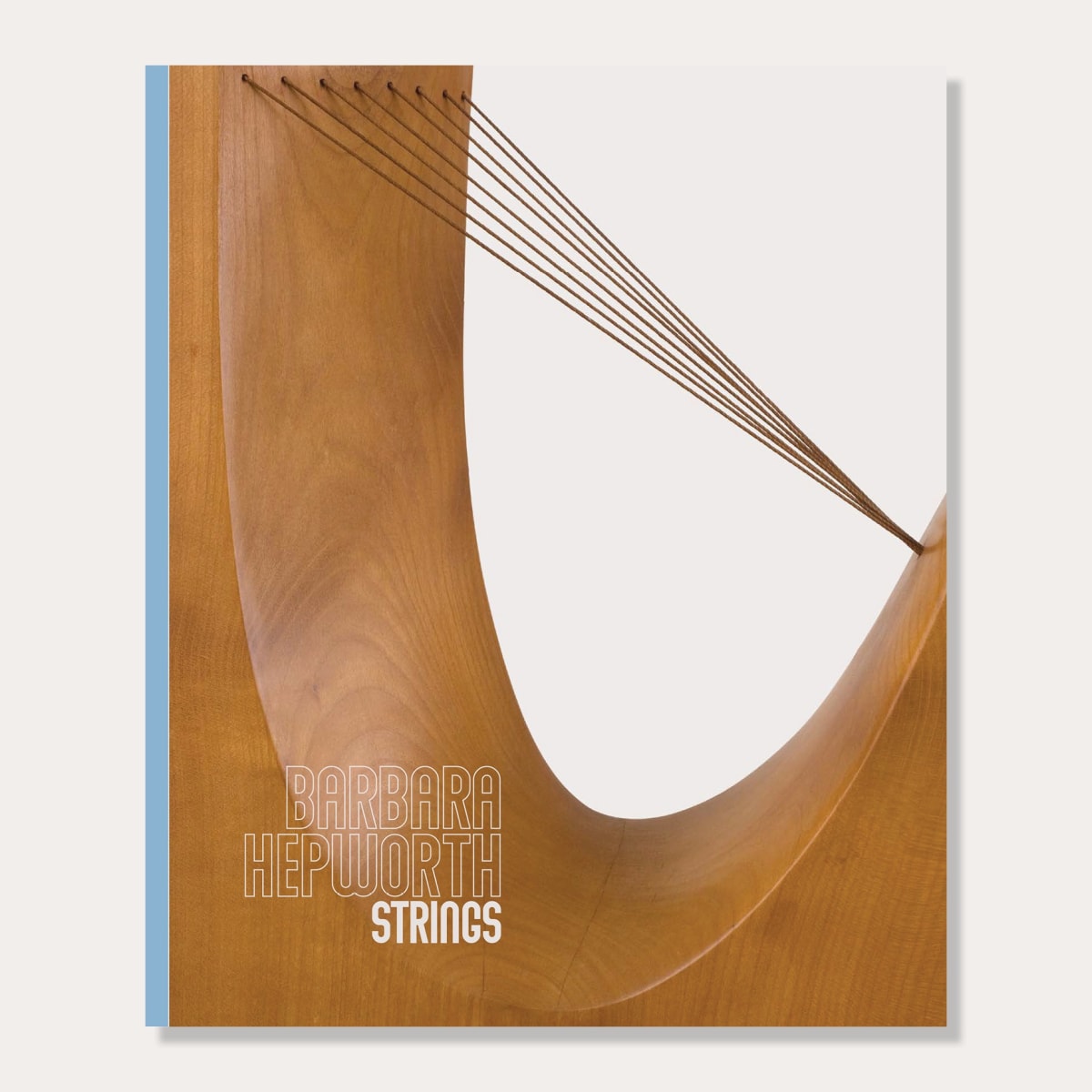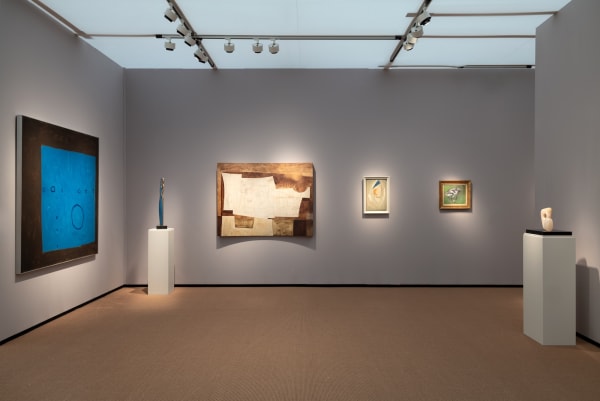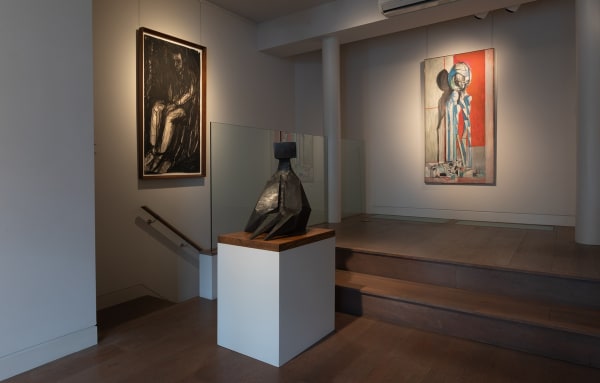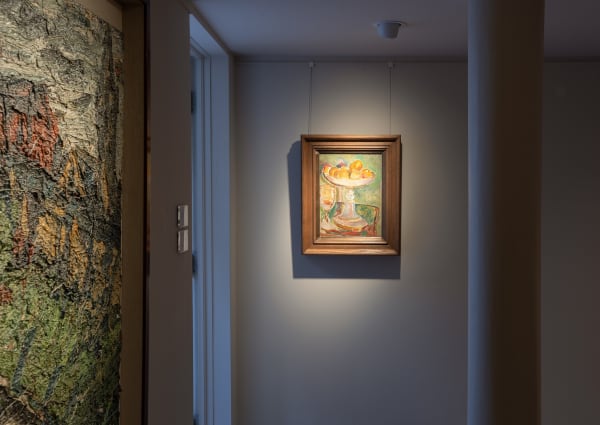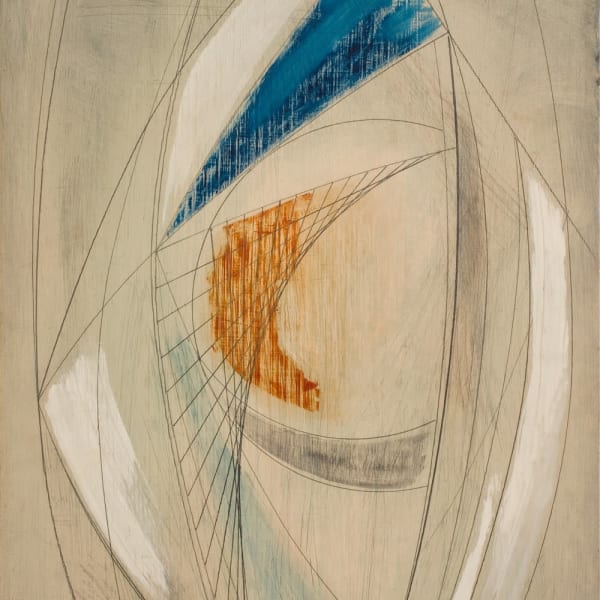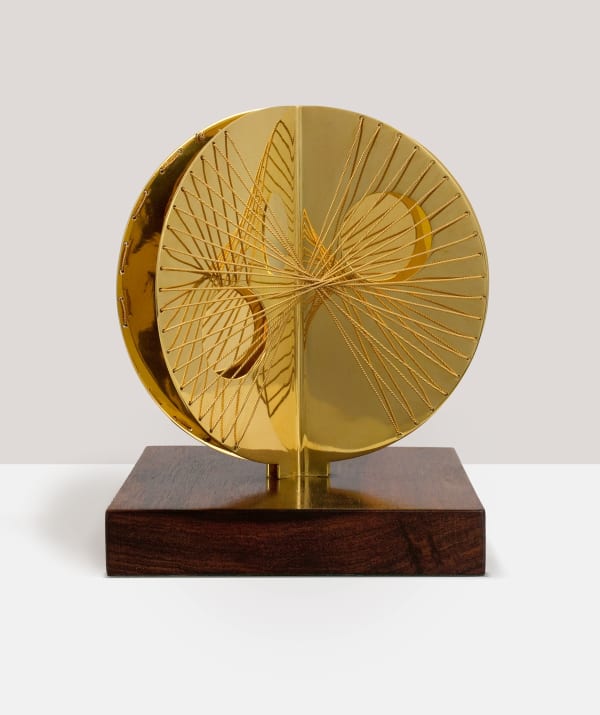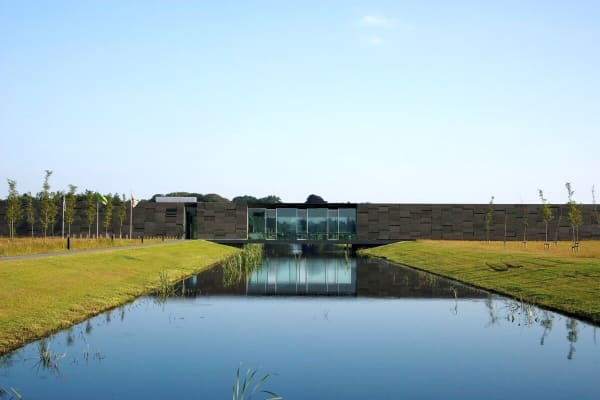Barbara Hepworth
The gallery regularly handles, acquires and advises on works by Barbara Hepworth. For more information or the availability of work, please contact the gallery.
Barbara Hepworth (1903–1975)
Barbara Hepworth (1903–1975) was one of the most original sculptors of the twentieth century. Along with a small circle of friends working in Hampstead in the thirties, she was an early pioneer of the modernist movement in Britain. Following the adoption of direct carving by Constantin Brâncuși in 1906 and by Eric Gill in Britain around 1909, Hepworth and her friend Henry Moore uniquely combined carving and a modernist vocabulary of abstract forms.
Hepworth was born in Wakefield, Yorkshire, and after an extended period living in London she moved with her family to St Ives when war threatened in August 1939. She chose to remain in Cornwall for the rest of her life and formed a profound attachment to the landscape of West Penwith. Much of her work addresses the motif of a figure standing in the open countryside. After a brief marriage to the sculptor John Skeaping, she met Ben Nicholson in 1931 and they immediately fell in love. Their triplets were born in October 1934, and they separated in the early fifties.
After the Second World War, Hepworth achieved widespread international recognition especially in North America and Japan. In 1955–56, following a retrospective exhibition of her work at Whitechapel Art Gallery, a selection of her carvings and drawings toured across the United States and Canada. Later in life she forged a close connection with the Tate Gallery, making a large gift of her work to the gallery in 1964. Her home studio of Trewyn in St Ives, a remarkably extensive property in such a compact town, was opened as a museum after her death, and it has been operated as part of Tate since 1980.
-
 Two rotating forms II, 1966
Two rotating forms II, 1966 -
 Aegean, 1956
Aegean, 1956 -
 Idol, 1955–56 / cast 1971
Idol, 1955–56 / cast 1971 -
 Three curves with strings (Gold Mincarlo), 1971
Three curves with strings (Gold Mincarlo), 1971 -
 Maquette: Theme and Variations, 1970
Maquette: Theme and Variations, 1970 -
 Maquette: Theme and Variations, 1970
Maquette: Theme and Variations, 1970 -
 Porthmeor, 1969
Porthmeor, 1969 -
 Preparation, 1949
Preparation, 1949 -
 Reclining Figures, 1952
Reclining Figures, 1952 -
 Rhythmic forms, 1957
Rhythmic forms, 1957 -
 Turning form (blue), 1960
Turning form (blue), 1960 -
 Disc with strings (Moon), 1969
Disc with strings (Moon), 1969
-

Frieze Masters
Regents Park, London 15 - 19 Oct 2025 Art FairPiano Nobile are exhibiting at Frieze Masters. Our curated display illustrates key episodes in British art of the last century. Highlights include a significant alabaster sculpture by Barbara Hepworth, works...Read more -

Barbara Hepworth: Strings
6 Feb - 2 May 2025 Piano NobileSpanning three decades of Barbara Hepworth’s career, the exhibition features stringed sculptures in a comprehensive range of materials and sizes from large-scale works in wood and brass to small-scale works in bronze.Read more -

Treasure House Fair
Royal Hospital Chelsea 27 Jun - 2 Jul 2024 Art FairPiano Nobile returned to The Treasure House Fair in June of 2024. We highlighted works from across the twentieth century, with early paintings by Augustus John and Walter Sickert, Duncan...Read more -

London Art Week
Winter 2021 3 - 11 Dec 2021 OnlineFor London Art Week Winter 2021, Piano Nobile presented an online display of paintings, sculpture and works on paper. Featured artists included Walter Sickert, Barbara Hepworth, William Turnbull, Grayson Perry...Read more -

Masterpiece
Online Viewing Room 23 - 27 Jun 2021 OnlinePiano Nobile participated in Masterpiece Online 2021. We highlighted a selection of outstanding work by twentieth-century British artists, including paintings, sculpture and drawings by Leon Kossoff, Lynn Chadwick, Lucian Freud...Read more -

Defining British Art
1910 - 2000 17 May - 23 Jul 2021 Piano NobileThis exhibition reviewed the major creative outbursts in twentieth-century Britain, with paintings, sculptures, ceramics and textiles made by four generations of pioneering artists – from Sickert at the fin de...Read more
-
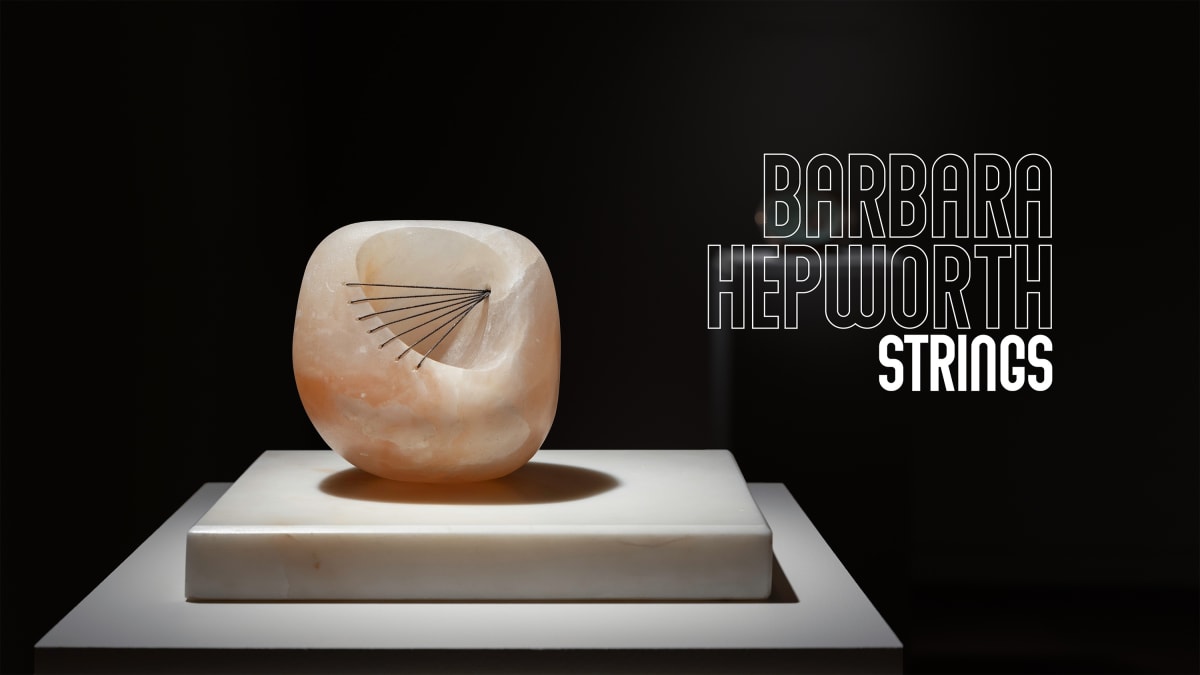
Barbara Hepworth: Strings
April 15, 2025Piano Nobile is delighted to present a short film to accompany the gallery’s exhibition Barbara Hepworth: Strings . The film features curator Michael Regan, art historian Dr Stephen Feeke and Eleanor Clayton, the Head of Collections and Exhibitions at The Hepworth Wakefield. They discuss Hepworth's contribution to the modernist movement, how important a role string played in her sculptural language from 1939 onwards, and how she understood its meaning in her practice.Read more -
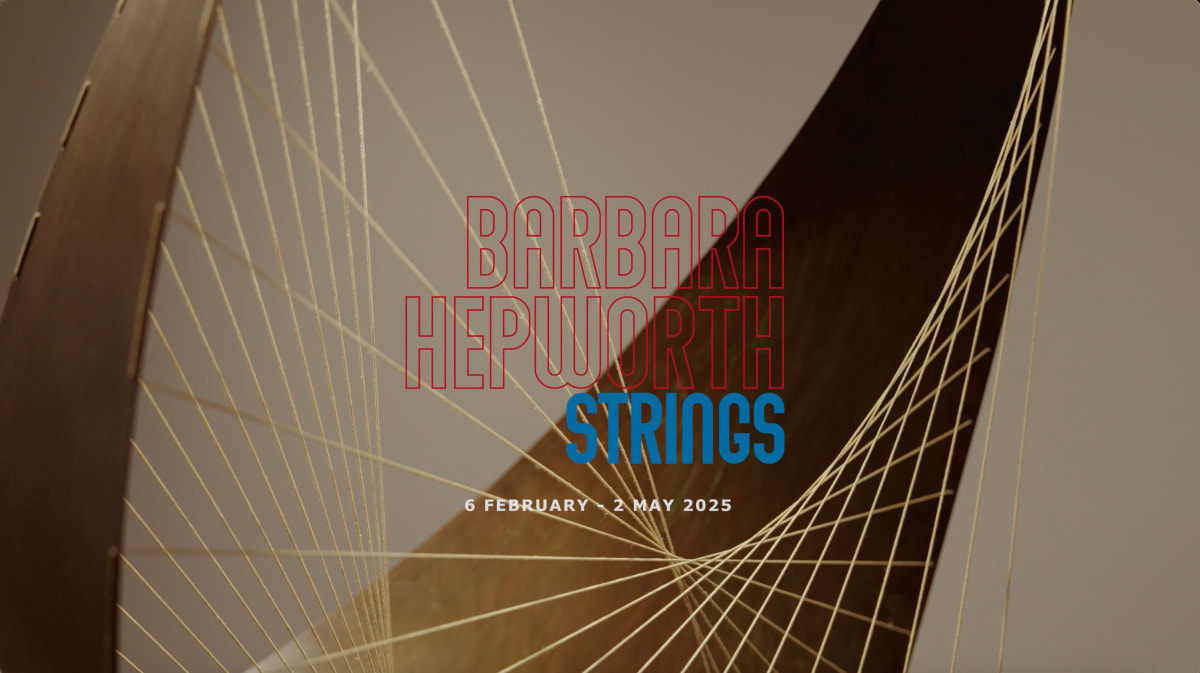
Barbara Hepworth: Strings
6 February - 2 May 2025 December 18, 2024In 1939, Barbara Hepworth (1903–1975) made her first sculpture threaded with strings. For the rest of her career, she intermittently combined string with works made from plaster, wood, metal and stone. These were some of her most personally distinctive artistic achievements. In concert with her sculptural practice, she also used string-like motifs in abstract paintings and drawings. Coinciding with the fiftieth anniversary of the artist’s death, 'Barbara Hepworth: Strings' is the first exhibition dedicated to these aspects of Hepworth’s output.Read more -
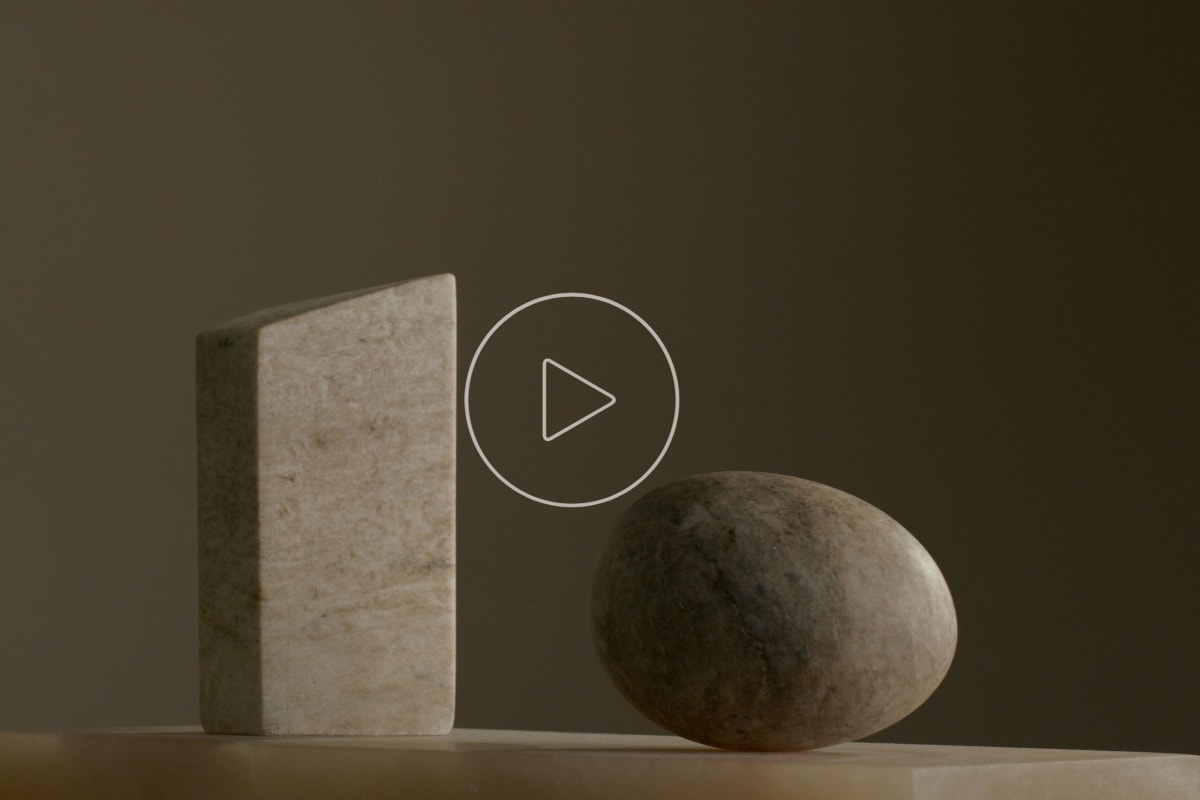
Barbara Hepworth
Two Forms, 1934-35 December 2, 2021Read more about the work here.Read more
-

Spring Retrospective
Drift February 28, 2025In an article by Jamie Crocker, Drift journal explores Piano Nobile's Hepworth exhibition, particluarly in light of her connection to Cornwall. The journal also featured...Read more -

InSight No.166
Barbara Hepworth | Turning form (blue) February 28, 2025A sculptor of profound vision and technical ability, Barbara Hepworth also made drawings and paintings loaded with qualities of texture and volume. Some of these...Read more -

InSight No. 165
Barbara Hepworth | Three curves with strings (Gold Mincarlo) February 14, 2025InSight considers one of the rare sculptures that Barbara Hepworth made from gold, now on display in Piano Nobile’s exhibition of Hepworth’s stringed sculptures. InSight...Read more -

Barbara Hepworth’s Previously Unseen Stringed Sculptures Make Their U.K. Debut
Artnet February 11, 2025Min Chen reports on Piano Nobile's exhibtion, the first to delve into Hepworth's use of strings throughout her practice.Read more -

Piano Nobile founder and executive chairman discusses the exhibition Barbara Hepworth: Strings
BBC Radio Four: Today Programme February 5, 2025Listen to Dr Robert Travers on the segment from 2 hours 55 minutes in via this link: Today Programme . Link is live until 7...Read more -

Never-before-seen Barbara Hepworth works go on show in landmark exhibition
Wallpaper February 4, 2025Anna Solomon delves into the stories surrounding Hepworth’s sculptures in a feature on Piano Nobile's exhibtiom. The show features works that span three decades, including...Read more -

Barbara Hepworth sculptures exhibited in public for first time
The Guardian | The Observer February 1, 2025Richard Brooks wries on Piano Nobile's exhibition focusing on the artist’s fascination with string which includes works unseen beyond private collections.Read more -

InSight No. 140
Barbara Hepworth | Preparation December 21, 2023InSight considers a poignant work of angelic humanist art by a titan of the modernist movement in Britain—Barbara Hepworth. InSight No. 140 Barbara Hepworth |...Read more -

Museum Belvédère's Living the Landscape exhibition to include Piano Nobile loans
Oranjewoud, Holland June 20, 2022Piano Nobile are delighted to have loaned several works to Museum Belvédère's Living the Landscape exhibition. Focusing on the work of Ben Nicholson, Barbara Hepworth...Read more -

InSight No. 96
Barbara Hepworth | Two Forms February 2, 2022To Barbara Hepworth, the act of carving by hand was highly significant. After giving birth to triplets in October 1934, she continued carving and discovered...Read more -

InSight No. 77
Barbara Hepworth | Maquette, Theme and Variations, 1970 July 14, 2021Barbara Hepworth's final large-scale commission prompted a late flowering in her career. The project inspired a companion piece, a work of equal subtlety and sculptural...Read more -

InSight No. 76
Barbara Hepworth | Reclining Figures July 7, 2021Over the next two weeks, InSight presents two works by one of the great sculptors of the twentieth century: Barbara Hepworth. Barbara Hepworth Reclining Figures...Read more -

InSight No. 12
Barbara Hepworth | Disc with Strings (Moon) May 13, 2020At 4.20 a.m. this morning, the tide in St Ives harbour reached its low point. A resident of the town from 1939 until her death...Read more

















